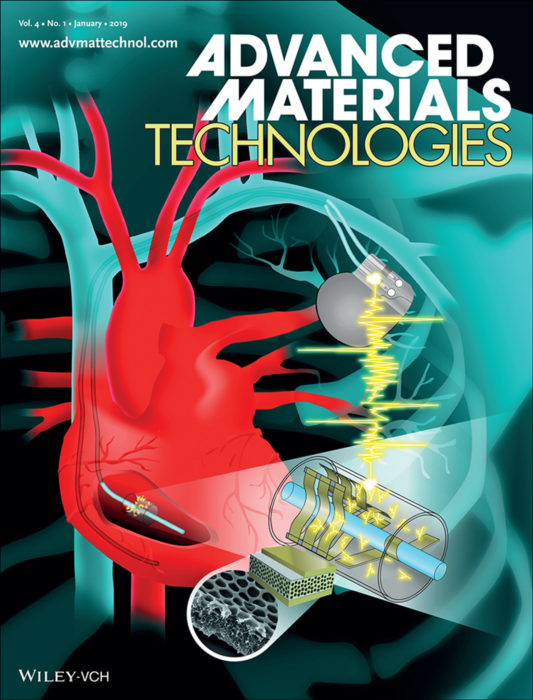Feb 04 2019
Powering Implantable Devices
 As our electronic and computer technology advances, the technology of implantable medical devices is opening up. Things like pacemakers are already old established tech, but ambitious researchers are looking at much more than just pacing the heart. There is potential for brain-machine interfaces, spinal cord stimulators, cochlear implants, and even replacement organs. One major technological limitation, however, is how to power these devices.
As our electronic and computer technology advances, the technology of implantable medical devices is opening up. Things like pacemakers are already old established tech, but ambitious researchers are looking at much more than just pacing the heart. There is potential for brain-machine interfaces, spinal cord stimulators, cochlear implants, and even replacement organs. One major technological limitation, however, is how to power these devices.
Right now the state-of-the art is small batteries. A pacemaker, for example, can last 5-10 years on one battery, which then would have to be replaced. Replacing a battery requires another surgery, which is fairly low risk but not negligible. Researchers are working on essentially two options to get around this limitation. The first is recharging batteries from the outside using a coil. You generate an electromagnetic field on the outside which induces a current in an implanted coil which then recharges the battery. This works, but is limited by the fact that tissue tends to block the field, and also the coils are bulky which limits the biological spaces in which they can be placed.
Still, external recharging can work for some applications. For example, a pacemaker can have a battery pack just under the skin that a coil can be placed directly over to recharge.
Perhaps a better option would be if the device could harvest energy continuously from the body itself. The body generates a lot of energy in multiple forms, and if even a small amount of that could be harvested that could keep something like a pacemaker going indefinitely, without any further recharging or surgery. Further, a totally self-charging device could be placed deep within tissue, without the need to have a coil visibly just under the skin.
One option, and perhaps the best option, for harvesting small amounts of biological energy for implantable electronic devices is the piezoelectric effect. Some materials are able to transfer mechanical energy into electrical energy. Because of their molecular structure, deformations create a small electric current. That electric current can be harvested to recharge a battery.
A recent study illustrates this principle. The researchers placed a piezoelectric cantilever on the main lead of an implanted pacemaker. As the heart beats the cantilever is moved, generating steady electricity for the pacemaker itself. Such devices can be small, deep, and theoretically never need replacing.
This is an obvious application of this type of technology. However, the arrow of innovation can go both ways – in other words, often a mechanism is developed in order to serve a specific application. But then that mechanism allows for the development of new applications, which may be more important than the original application. To take one historical example, the steam engine was originally developed in order to pump water out of mines – a very narrow application. But once the engine developed to a certain point, the potential applications exploded way beyond mining, and transformed our world.
I suspect the same may be true here. Researchers are developing technology to harvest energy from movement or other biological activity in order to power existing devices, like pacemakers. But once that technology is sufficiently developed, that may open up a world of new possible applications that will dwarf mere pacemakers.
First, people move a lot, so there is no shortage of source energy. We breathe, for example, which is a constant steady motion of the chest wall. We also move our limbs. Just walking creates a lot of potential kinetic energy. (Obviously patients who are severely debilitated will have more limited options.) For people with average activity levels, just walking could power a host of small implantable devices – to run an insulin pump, or a deep-brain stimulator for seizures or other neurological application, or to monitor various biological parameters. Imagine an implantable device that monitors various blood parameters (glucose, electrolytes, etc,), blood pressure, heart rate and rhythm, breathing rate, or brain waves. This information can be transmitted to a cell phone and then to your doctor, or monitored by software to provide important clinical information or even alert to potential problems.
I am probably not even thinking about what will become the most important applications – but once we have the ability to self-power implantable devices, with small enough electronics that they can fit in tight biological spaces, and produce enough energy to work with, people will find many applications. Researchers are also working on developing more “squishy” electronics, that are flexible and will move with the body and are biologically compatible. More efficient electronics (for example, using carbon nanotubes) allow for using less energy and producing less waste heat.
Multiple features are progressing steadily and moving in the direction of better powered biological devices. We are probably rapidly moving in the direction of the human cyborg, developing technology that we can comfortably merge with. And as I often speculate – at first such technology will be used to mitigate and treat medical problems, but eventually may be used for routine monitoring and disease prevention, and then for augmentation.






